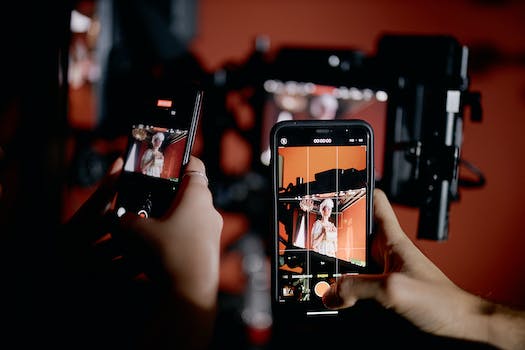Movies and documentaries are two distinct forms of storytelling that serve different purposes. While movies are fictional narratives created for entertainment, documentaries are non-fictional accounts aimed at informing and educating viewers. This article explores the key differences between these two genres, shedding light on their respective characteristics, goals, and impact on audiences.
- 1. Introduction
- 2. Narrative Structure
- 2.1. Storytelling in movies
- 2.2. Storytelling in documentaries
- 2.3. Use of fictional elements
- 2.4. Use of real-life events
- 2.5. Impact on audience
- 3. Production Techniques
1. Introduction
Movies and documentaries are two popular forms of visual storytelling that offer distinct experiences to the audience. While both involve the use of moving images and sound to convey narratives, they differ in terms of their purpose, style, and approach.
A movie, also known as a feature film, is a fictional creation intended for entertainment purposes. It typically follows a scripted storyline and incorporates various elements such as plot, characters, dialogues, and cinematography. Movies often aim to captivate the audience through engaging narratives, emotional performances, stunning visuals, and special effects. They can be classified into different genres such as action, romance, comedy, drama, thriller, and science fiction.
On the other hand, a documentary is a non-fictional film that presents factual information or explores real-life events, people, places, or issues. Unlike movies, documentaries focus on presenting reality rather than fictional narratives. They aim to inform, educate, raise awareness, provoke thought, or shed light on a particular subject. Documentaries can cover a wide range of topics including history, nature, politics, social issues, science, art, and more.
While both movies and documentaries use visual and auditory elements to convey their messages, they serve different purposes and cater to different audience preferences. Understanding the difference between these two forms of visual storytelling can help viewers choose the type of content that aligns with their interests and expectations.
1.1. Definition of a movie
A movie, also known as a film, is a form of visual storytelling that combines moving images, sound, and dialogue to create a narrative. It is typically presented in a cinematic format and is intended for entertainment purposes. Movies can be fictional or based on true events, and they can cover a wide range of genres such as drama, comedy, action, romance, and science fiction. They are often produced by professional filmmakers and involve a team of actors, directors, producers, and crew members working together to bring the story to life. Movies are usually shown in theaters or released on various platforms for audiences to enjoy.
1.2. Definition of a documentary
A documentary is a non-fictional motion picture that aims to document reality and provide an objective account of real events, people, or issues. Unlike fictional movies, documentaries are based on actual events and strive to present factual information to the audience. Documentaries often explore various subjects such as social issues, historical events, scientific discoveries, or biographical profiles. They can be educational, entertaining, thought-provoking, or all of the above. Through a combination of interviews, footage, photographs, and narration, documentaries offer a unique perspective on the world and provide viewers with an opportunity to gain insight into different aspects of life.
1.3. Purpose of the article
The purpose of this article is to explore and highlight the differences between a movie and a documentary. Both movies and documentaries are forms of visual storytelling, but they serve different purposes and have distinct characteristics. By understanding these differences, readers will gain a deeper appreciation for the unique qualities of each genre and how they contribute to the overall landscape of film and media.
2. Narrative Structure
The narrative structure is a crucial element that distinguishes a movie from a documentary. While both mediums aim to tell a story, they employ different approaches in presenting and organizing their narratives.
In a movie, the narrative structure usually follows a traditional three-act structure consisting of an introduction, rising action, climax, falling action, and resolution. This structure allows for a well-defined plot with clear character arcs and a cohesive storyline. Movies often use fictional characters and events, allowing for creative storytelling and imaginative visuals.
On the other hand, documentaries focus on presenting real-life events, people, or issues. They aim to provide an objective and factual account of a subject matter. The narrative structure in documentaries can vary, depending on the filmmaker’s intentions and the nature of the content. Some documentaries may follow a linear narrative, while others may employ a more fragmented or non-linear structure.
Documentaries often rely on interviews, archival footage, and expert analysis to convey information and engage the audience. They may also incorporate voiceovers, text overlays, or reenactments to enhance the storytelling. Unlike movies, documentaries prioritize presenting reality and exploring real-world issues, often with a specific purpose or message.
In summary, the narrative structure is a key factor that sets movies apart from documentaries. While movies employ a fictional narrative structure with creative storytelling techniques, documentaries adopt a more objective and factual approach to present real-life events and issues.
2.1. Storytelling in movies
Storytelling in movies is an essential aspect of the narrative structure. It is the art of conveying a story or a message through visual and auditory elements. Through the use of captivating characters, compelling plotlines, and stunning cinematography, movies have the power to transport audiences into a different world and evoke a wide range of emotions.
One of the key components of storytelling in movies is the narrative structure. This refers to the way in which a story is organized and presented to the viewers. A well-structured narrative helps in creating a sense of coherence and engagement for the audience.
In movies, the narrative structure typically consists of three main elements: the beginning, the middle, and the end. This structure follows a linear progression, starting with an introduction to the characters and the setting, followed by the development of the plot and conflicts, and concluding with a resolution or climax.
The beginning of a movie sets the stage by introducing the main characters, their backgrounds, and the world they inhabit. It establishes the initial conflict or goal that drives the story forward. This part of the narrative structure is crucial in grabbing the audience’s attention and making them invested in the story.
The middle section of a movie is where the story unfolds and the conflicts intensify. This is often the longest part of the narrative structure, as it includes various plot twists, character development, and rising action. It keeps the audience engaged and eager to see how the story will unfold.
Finally, the end of a movie brings the narrative to a resolution. It offers closure to the conflicts and provides a satisfying conclusion for the audience. This part of the narrative structure is essential in leaving a lasting impression on the viewers.
Overall, storytelling in movies and the narrative structure play a crucial role in creating a captivating and memorable cinematic experience. It allows filmmakers to effectively communicate their ideas, entertain audiences, and evoke powerful emotions.
2.2. Storytelling in documentaries
Storytelling in documentaries is an essential element that sets them apart from movies. While both mediums aim to captivate and engage the audience, documentaries often have a distinct narrative structure that focuses on presenting real-life events and experiences. Unlike movies, which are fictional narratives, documentaries rely on storytelling techniques to convey information, educate, and evoke emotions.
Narrative structure in documentaries refers to the way the story is organized and presented. It involves the arrangement of events, the selection of subjects, and the overall flow of the narrative. Documentaries can employ different types of narrative structures, depending on the filmmaker’s intention and the subject matter.
One common narrative structure used in documentaries is the chronological approach. This approach presents events in the order they occurred, providing a clear timeline and allowing the audience to follow the story easily. It is particularly effective when documenting historical events or biographies.
Another narrative structure often utilized in documentaries is the thematic approach. This approach focuses on exploring specific themes or topics related to the subject matter. It may involve interviews with experts, showcasing different perspectives, and presenting supporting evidence to build a comprehensive understanding of the theme.
Additionally, documentaries can employ a more experimental or non-linear narrative structure. This approach challenges traditional storytelling conventions and may involve using various techniques such as flashbacks, found footage, or multiple storylines to create a unique and thought-provoking viewing experience.
In conclusion, storytelling in documentaries plays a crucial role in engaging the audience and conveying real-life stories. The narrative structure used in documentaries differs from that of movies, as it aims to present factual information and evoke emotions through various storytelling techniques. Whether employing a chronological, thematic, or experimental approach, documentaries strive to inform, educate, and inspire viewers.
2.3. Use of fictional elements
The use of fictional elements in storytelling allows for the creation of a narrative structure that is distinct between movies and documentaries. In a movie, fictional elements are often employed to enhance the entertainment value and engage the audience. These elements can include fictional characters, settings, and events that are created for the purpose of the story. This allows filmmakers to have more creative control over the narrative and to explore imaginative concepts.
On the other hand, documentaries strive to present real-life events and factual information. The narrative structure in a documentary is based on capturing and presenting the truth, often through interviews, archival footage, or observational filming. Unlike movies, documentaries aim to educate, inform, or raise awareness about specific subjects or issues.
While both movies and documentaries utilize storytelling techniques, the use of fictional elements in movies gives them the freedom to create a fictional world that may not exist in reality. This can provide escapism and entertainment for the audience. In contrast, documentaries focus on presenting reality as it is, without the embellishments of fictional elements.
In summary, the use of fictional elements in storytelling contributes to the narrative structure of movies, allowing for creative exploration and entertainment. Documentaries, on the other hand, prioritize presenting factual information and real-life events, maintaining a narrative structure that is grounded in reality.
2.4. Use of real-life events
The use of real-life events in storytelling is a powerful tool that can greatly enhance the narrative structure of both movies and documentaries. By incorporating actual events into a fictional or factual narrative, filmmakers can create a sense of authenticity and relatability for the audience.
In movies, the use of real-life events can add depth and meaning to the story. It allows filmmakers to depict historical events or significant moments in society, providing a context and grounding the narrative in reality. This can help the audience connect with the characters and their experiences on a more profound level.
Furthermore, real-life events can serve as a source of inspiration for filmmakers. They can draw from true stories and adapt them to create compelling narratives that resonate with the audience. This can be particularly effective in creating emotional impact and driving the plot forward.
Documentaries, on the other hand, are based entirely on real-life events and aim to present a factual account of a specific subject or issue. The narrative structure in documentaries is often driven by the chronological order of events or a thematic approach. By using real-life events, documentaries can provide a deeper understanding of the subject matter and shed light on important social, political, or cultural issues.
In both movies and documentaries, the use of real-life events requires careful research and attention to detail. Filmmakers and documentarians must ensure the accuracy of the events portrayed and maintain the integrity of the story being told. This may involve conducting interviews, gathering archival footage, or consulting primary sources to create a comprehensive and authentic narrative.
Overall, the use of real-life events in both movies and documentaries can greatly enhance the narrative structure and provide a compelling storytelling experience. Whether it is adding depth to a fictional story or presenting a factual account, incorporating real-life events allows filmmakers to create a stronger connection with the audience and convey important messages effectively.
2.5. Impact on audience
The narrative structure plays a crucial role in shaping the impact on the audience when it comes to movies and documentaries. In a movie, the narrative structure is often designed to evoke a range of emotions and engage the viewers in a fictional world. It follows a well-defined plot structure, with a clear beginning, middle, and end. The storyline is carefully crafted to create suspense, build tension, and ultimately deliver a satisfying resolution. Through the use of various cinematic techniques such as visual effects, soundtracks, and performances, movies can transport the audience to different time periods, locations, or even imaginary realms.
On the other hand, documentaries aim to present factual information and real events to educate, inform, or raise awareness about a particular subject. The narrative structure in documentaries may not follow a traditional plot structure like movies do. Instead, it often relies on real-life interviews, archival footage, and expert commentary to present a coherent and engaging story. The impact on the audience in a documentary is usually derived from the authenticity and credibility of the information presented. It can elicit emotions such as empathy, shock, or admiration, as it provides a deeper understanding of real-life experiences or significant events.
In summary, the narrative structure in movies focuses on entertainment and storytelling, while documentaries prioritize factual information and real-life experiences. Both mediums have the power to impact the audience, but in different ways. Movies captivate through imagination and immersion, whereas documentaries captivate through knowledge and emotional connection.
3. Production Techniques
In the world of filmmaking, there are distinct differences between a movie and a documentary. These differences stem from various production techniques employed in each genre. Understanding these techniques can help one appreciate and analyze the contrasting nature of movies and documentaries.
When it comes to making a movie, the emphasis is on creating a fictional story or narrative. The production process involves a team of professionals, including screenwriters, directors, actors, and crew members. The story is usually scripted, and the scenes are carefully planned and executed to bring the script to life.
On the other hand, a documentary aims to capture real-life events, people, or issues. Instead of a scripted story, documentaries rely on actual footage, interviews, and testimonies to convey information or raise awareness about a particular subject. The production techniques for documentaries involve research, pre-production planning, on-location shooting, and post-production editing.
In terms of visual style, movies often employ cinematic techniques such as camera angles, lighting, and special effects to enhance the storytelling. The aim is to create a visually compelling experience for the audience, where the aesthetics play a crucial role in immersing them in the fictional world. Documentaries, on the other hand, tend to have a more straightforward and realistic visual style, focusing on capturing real-life moments as they unfold.
Sound design is another aspect where movies and documentaries differ. Movies employ soundtracks, background scores, and sound effects to heighten emotions and create a cinematic atmosphere. In contrast, documentaries primarily rely on natural sounds, ambient noises, and interviews to provide an authentic audio experience.
In conclusion, the production techniques used in movies and documentaries contribute to their distinctiveness. While movies focus on storytelling, fictional narratives, and visually immersive experiences, documentaries aim to capture reality, raise awareness, and provide factual information. Understanding these differences can enhance one’s appreciation for both genres and their unique approaches to filmmaking.
3.1. Cinematic techniques in movies
Cinematic techniques play a crucial role in movies, creating a distinct visual and emotional experience for the audience. These techniques are employed by filmmakers to enhance storytelling and deliver a captivating narrative. In the section on production techniques, we will explore some of the key differences between a movie and a documentary in terms of cinematography, camera angles, lighting, and sound design.
3.2. Cinéma vérité in documentaries
Cinéma vérité, also known as observational cinema, is a prominent production technique used in documentaries. This style of filmmaking aims to capture real-life situations and events without any manipulation or interference from the filmmaker. The goal is to present an unbiased and authentic portrayal of the subject matter, allowing the audience to observe and interpret the events as they unfold. Cinéma vérité emphasizes capturing spontaneous moments and genuine emotions, often using handheld cameras to create an intimate and immersive experience. This technique has been widely used in documentaries to provide a realistic and unfiltered depiction of various subjects, ranging from social issues to personal stories.
3.3. Use of scripted dialogues
Scripted dialogues play a crucial role in the production techniques of both movies and documentaries. While movies primarily rely on fictional stories and characters, documentaries focus on real events and people. In movies, scripted dialogues are carefully crafted to enhance the narrative and develop the characters. These dialogues are often rehearsed multiple times to ensure perfect delivery during filming. They contribute to the overall storytelling and help create a compelling cinematic experience.
On the other hand, documentaries use scripted dialogues in a slightly different manner. In this genre, dialogues are typically based on interviews or real-life conversations. The purpose of using scripted dialogues in documentaries is to provide clarity, context, and structure to the information being presented. Since documentaries aim to inform and educate viewers, scripted dialogues help in organizing the content and conveying it effectively.
Regardless of the genre, the use of scripted dialogues requires skilled writing that captures the essence of the story or subject matter. A proficient SEO writer who is fluent in English can play a vital role in creating engaging and impactful dialogues for both movies and documentaries.
3.4. Use of interviews and real footage
The use of interviews and real footage is a crucial production technique when distinguishing between a movie and a documentary. Interviews provide a platform for individuals involved in the subject matter to share their perspectives, experiences, and insights. These interviews can be conducted with experts, participants, or witnesses, depending on the nature of the project. Through interviews, filmmakers can capture firsthand accounts, emotions, and personal stories, adding authenticity and depth to the documentary.
Real footage, on the other hand, refers to the use of actual recorded events or scenes related to the subject matter. It can include archival footage, news clips, amateur recordings, or any footage that has been captured in a non-fictional context. Real footage allows the audience to witness events as they unfolded, creating a sense of realism and immediacy.
By combining interviews and real footage, filmmakers can present a comprehensive and compelling exploration of the subject matter. Interviews provide the human element, allowing the audience to connect with the individuals involved, while real footage brings a sense of authenticity and evidence to support the narrative. Together, these production techniques play a vital role in distinguishing between a movie, which is a work of fiction, and a documentary, which aims to present non-fictional information and perspectives.
3.5. Visual and audio effects
Visual and audio effects play a crucial role in enhancing the overall production value of both movies and documentaries. These effects are used to create a visually stunning and immersive experience for the audience, making the content more engaging and captivating.
In movies, visual effects are often employed to bring fictional worlds and characters to life. With the advancements in technology, filmmakers can now create realistic and jaw-dropping visual effects that were once unimaginable. From epic battle scenes to breathtaking landscapes, visual effects add a sense of grandeur and spectacle to the storytelling.
Similarly, audio effects in movies are carefully crafted to enhance the emotional impact of a scene. The right combination of sound effects, background music, and dialogue can heighten the intensity and evoke specific emotions in the audience. Whether it’s the suspenseful music in a horror film or the uplifting score in a romantic comedy, audio effects contribute to the overall cinematic experience.
On the other hand, documentaries rely more on authentic visuals and natural sounds to depict real-life events or subjects. While some documentaries may incorporate visual effects to illustrate certain concepts or historical events, the emphasis is usually on capturing raw and unfiltered reality. The goal is to present a factual and unbiased account of the subject matter, allowing the audience to gain a deeper understanding of the topic.
In terms of audio effects, documentaries prioritize capturing natural sounds and original recordings. Ambient noises, interviews, and voiceovers are used to convey information and provide context. The focus is on delivering the message and presenting real-life situations in a compelling and informative manner.
In conclusion, while both movies and documentaries utilize visual and audio effects, their purposes and approaches differ. Movies often rely on elaborate visual effects to create a fictional world, while documentaries aim to capture reality as it is. Understanding the role of visual and audio effects in these two forms of storytelling helps us appreciate the unique qualities and objectives of each.
Conclusion
In conclusion, while both movies and documentaries are forms of visual storytelling, they differ in their purpose, style, and approach. Movies are fictional narratives created for entertainment and often rely on artistic elements, such as acting and special effects. On the other hand, documentaries aim to present factual information and real-life events, offering a deeper understanding of various subjects. Each form has its own unique qualities and serves different purposes in the world of visual media.





